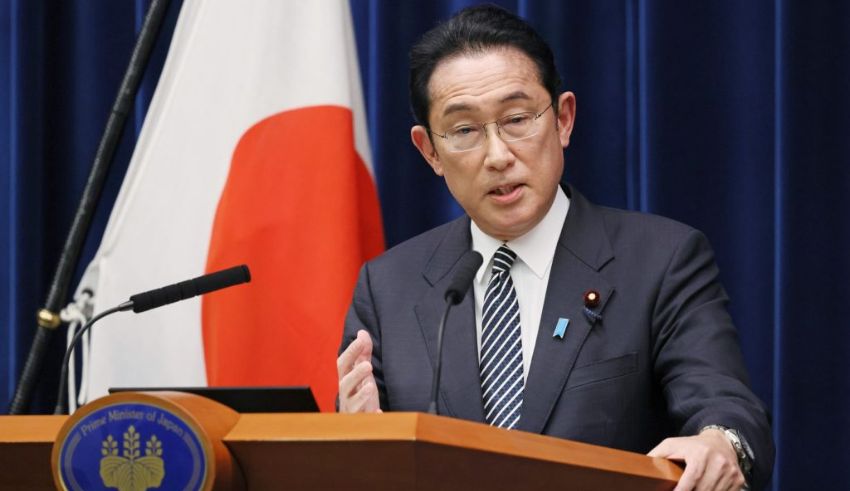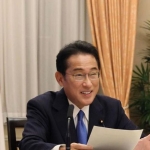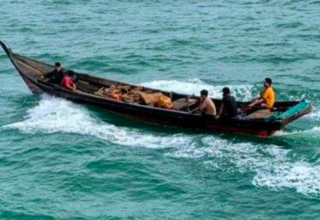
The Liberal Democratic Party (LDP) is preparing for a pivotal leadership vote on Friday while Japanese Prime Minister Fumio Kishida gets ready to resign. Given the LDP’s strong hold on parliament, this election will decide not only the party’s future head but also Japan’s next prime minister. The result should determine the political direction of the nation at a period when public confidence in the ruling party is waversing because of recent scandals.
Rising pressure on the LDP, a political juggernaut running Japan for most of the post-war era, to choose a leader able to restore its damaged image and tackle the issues confronting the nation Nine legislators total—two women among them—are vying for the highest office in the party. The incoming leader, however, will be immediately charged with rebuilding the LDP’s credibility and guiding the government through a stormy era. Ignoring this could send Japan back into a cycle of fleeting governments reminiscent of most of its recent political past.
How the Vote on Leadership Works
Selecting the next LDP leader is strategic as well as restricted. The vote is limited to the elected parliamentarians of the party and its 1.1 million grassroots members paying dues. Less than 1% of the qualified voters in Japan will so directly be able to influence the choice of the next prime Minister. Designed to keep control inside the party, the system mirrors the internal power dynamics of the LDP and has been crucial in guaranteeing its continuous dominance in Japanese politics.
Experts estimate that in the first round of voting, no one competitor will get an absolute majority given the packed field of applicants. The leadership campaign is probably going to enter a second round runoff between the top two vote-getters. Historically, the strong factions of the LDP would greatly affect these results; but, recent corruption scandals have changed the party’s leadership environment. With the dissolution of all but one of the LDP’s six divisions, factional control—which once guided party leadership decisions—may perhaps be ending.
This change in internal dynamics has produced a wild race. After a string of events tarnishing Kishida’s government damaged the LDP’s credibility, party officials are searching for a candidate able to rebuild public confidence. The stakes for the party are great: should the next leader fail to rebuild public confidence, the LDP may find itself in a political environment characterized by instability and ongoing leadership transitions.
What stands at risk for Japan?
The result of this leadership contest will have broad effects on the political direction of Japan. Many experts think the next president would live in a political milieu similar to the early 2000s, a time of frequent leadership changes, political unrest, and brief regimes. Japan had a fast turnover of prime ministers during that period until former Prime Minister Shinzo Abe offered hitherto unheard-of eight years of stability.
But the political environment of today offers difficulties that could compromise long-term stability. The LDP’s factions weakened means the future leader might have more personal authority than former prime ministers. However, as Yu Uchiyama, a University of Tokyo politics expert, notes, that power will only survive if the leader can keep great public and party support. Uchiyama cautions that public confidence will be crucial in determining whether the next prime minister can carry out major political reforms and prevent turning into another transient leader in Japanese revolving-door politics.
Political future of Japan also presents several urgent problems. Driven by regional security issues as well as the necessity to change its child care policy to fit its fast aging population, the nation must deal with growing defense expenditure. Furthermore, the impending threat of climate change offers the incoming government an environmental as well as a financial difficulty. Ignoring these problems with logical long-term plans could lower public trust in the government even further.
Notwithstanding these internal issues, Japan’s basic foreign policy and security approach is not likely to change much. Particularly in view of growing geopolitical difficulties in East Asia, Japan’s alliance with the United States remains the pillar of its foreign policy. Even with a new prime minister leading the nation, its diplomatic and security posture is expected to stay consistent with its long-standing obligations.
How Scandals Affect the LDP
The present leadership contest of the LDP is happening against the backdrop of political scandals undermining public confidence in the party. Of them, the most serious one revolves around the neglect of some powerful party members to disclose political contributions. This seriously tarnished the party’s credibility as many legislators, their assistants, and accountants were charged.
Critics contend that although Kishida’s government conducted an internal probe into these matters and tightened political fundraising rules, these moves have been inadequate. The public’s discontent with the way the LDP handled the scandals has stoked questions about the party’s sincerity toward real reform. The LDP runs the danger of ongoing voter alienation without more vigorous efforts to improve its reputation.
Many political experts feel that the leadership contest presents the party with a vital chance to change its reputation. On the other hand, political editorial writer for the Mainichi newspaper Chiyako Sato projects ongoing political stagnation in the LDP. She contends that the party might keep selecting leaders without attending to the more fundamental problems causing public unhappiness.
The Interviewees
Each of the nine candidates running for the LDP leadership is a seasoned lawmaker, either holding or having held Cabinet posts. Three among them—Shigeru Ishiba, Shinjiro Koizumi, and Sanae Takaichi—have become frontrunners.
Former defense minister Shigeru Ishiba regularly ranks as the most often chosen candidate in media polls. Though his position on some issues may not coincide with all party factions, Ishiba is generally considered as a competent leader based on his defense knowledge and policy experience.
Keep Reading
Current environmental minister Shinjiro Koizumi is Junichiro Koizumi’s son, a former prime minister. Koizumi appeals to those looking for generational transformation inside the LDP as a younger, more vibrant player in Japanese politics. Though he has not always been a favorite of the party’s conservative members, his support of environmental measures and initiatives to modernize the LDP has drawn a sizable following.
A strong conservative, Sanae Takaichi, the minister of economic security, is supported by the surviving Abe faction members Previously running against Kishida in the 2021 leadership contest, Takaichi’s dedication to traditional values and robust military programs has won her support among party members more right-leaning.
An Historic Chance for the First Female Prime Minister of Japan?
Both Sanae Takaichi and Foreign Minister Yoko Kamikawa are fighting to be the first female prime minister of Japan, a historic event that might drastically change the political scene of the country. Though their candidacies have symbolic significance, the choice finally rests with top male LDP leaders who still have great impact: former Prime Ministers Taro Aso, Yoshihide Suga, and Kishida.
Takaichi, of the two women, scores better in media polls partially because of her allegiance to Abe’s legacy and ties to conservative groupings. Those who contend that her policies could impede women’s advancement in Japan’s still mostly patriarchal society have attacked her on her stance on conservative customs, particularly paternalistic ideals.
Seen as a safer option for some, Kamikawa has underlined that her candidature itself is proof of LDP transformation. She lacks the significant factional backing Takaichi possesses, so her chances of winning the leadership campaign are regarded as lesser.
With women forming just 10.3% of the lower house of parliament, male politicians still predominate in Japan’s political system. In terms of female representation in government, this places Japan 163rd worldwide—a clear discrepancy for one of the top economies in the world. Although the two women in the marathon mark a move toward more inclusivity, conquering strongly rooted customs will prove to be a difficult task.
What direction is Japan headed?
October 1 will see Kishida and his Cabinet ministers retire after the new LDP leader is chosen. After garnering parliamentary approval, the new leader will subsequently assemble a Cabinet. Although the lower house term for Japan now runs until October 2025, several of the contenders have said they will call an early poll to confirm their mandate. Seeking to capitalize on their fresh image, political watchers anticipate this election to take place within weeks of the new leader assuming office.
Benefiting from the controversies of the LDP, the main opposition, the Constitutional Democratic Party of Japan (CPDJ), has made some gains in municipal elections earlier this year. Still, the opposition is split and finds it difficult to project itself as a workable substitute for the ruling party. The CPDJ recently chose former Prime Minister Yoshihiko Noda as its head in an attempt to reach more broadly by signaling a conservative change meant to win over swing voters and disappointed LDP supporters.
Notwithstanding these initiatives, many experts doubt that the CPDJ or other opposition parties can significantly challenge the LDP in the next election. A party member observed during a recent LDP campaign event in Tokyo that the political scene of Japan lacks the kind of two-party rivalry observed in nations such as the United States. He pointed out that the CPDJ lacks the power to successfully oppose the LDP’s hegemony, so the next leader of the ruling party will mostly control Japan’s political future.


























